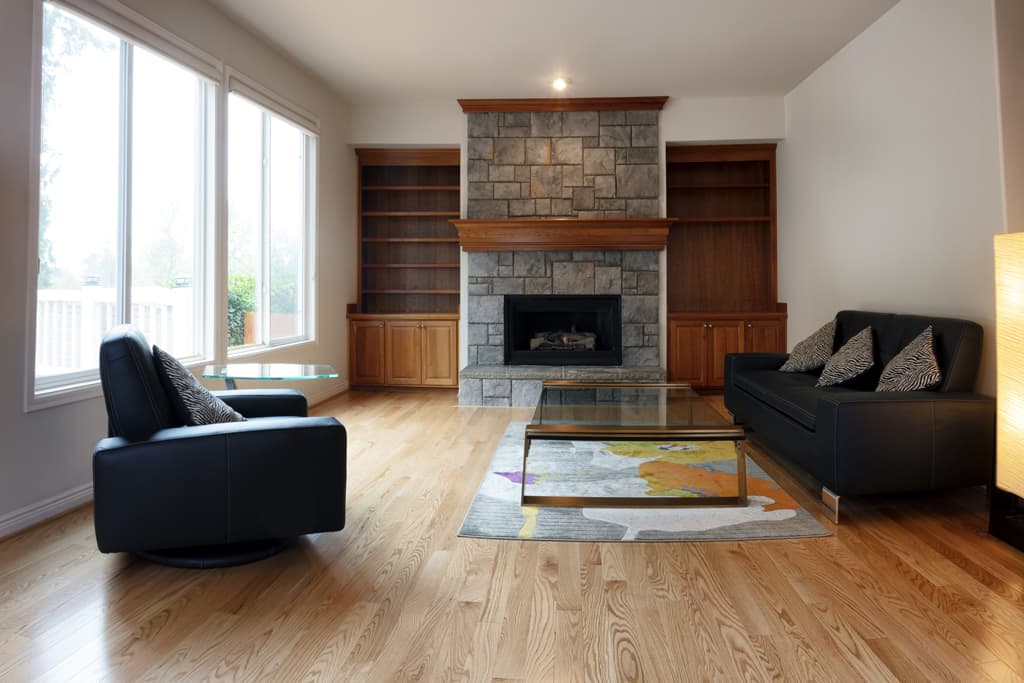
Pilot Light Problems
Sometimes, a gas fireplace suffers from the issue of the pilot light not staying lit. The pilot light, as you’re probably familiar, is the small blue flame that ignites when you turn a key or flip a switch. This flame helps get your fire started so you don’t have to waste a bunch of kindling to catch the logs on fire to get it roaring. The pilot light’s flame should be mostly blue with very little yellow color mixed in. The flame itself should be touching the sensors that surround it. These sensors are the thermocouple and thermopile. A fully yellow or red flame is an indication that the gas is contaminated. Fixing the pilot light may just require that you replace the fireplace thermocouple. There’s a possibility that this component has gone bad or is simply worn out from prolonged use. If the problem doesn’t reside with the thermocouple, then it’s likely that the issues are stemming from a thermopile. Before you begin replacing parts, first check to make sure the gas is turned on and supplied. Try resetting your pilot light. If the gas fireplace still won’t remain lit, then it’s time to check the relative parts.
Thermocouple and Thermopile
Knowing the difference between these two fireplace parts can mean a smoother, more streamlined fix in resolving your gas problem. The thermocouple is a sensor that measures the flow of gas and is responsible for supplying the gas to the pilot light through the valve. The thermopile opens up this gas valve when the fireplace is switched on. While both parts are similar in the fact that they help convert deliver gas to the fireplace and convert heat into electricity, the thermopile does generate more of an electrical current in comparison. First, check your thermopile. The thermopile can be tested with a multimeter where it analyzes the TH/TP contacts to determine how much electricity is being produced. Make sure before doing so that the pilot light has been on for at least two minutes or longer—then switch off the pilot light. You’ll locate the main gas control valve, then the thermopile sensor which should have its electric contacts labeled (TH/TP and TP) on the valve itself. If you have trouble, you can turn to the manufacturer’s instruction manual for help. Place the multimeter on both spots, the TH/TP and the TP terminal. The multimeter should read 300 millivolts or higher. If it reads less, then the thermopile should be cleaned (turn off the gas supply and use a stainless-steel brush with fine-grit sandpaper), if the reading is still low, then replace the thermopile. Another reason your gas fireplace won’t stay lit could be the thermocouple. If you’ve tested the thermopile and it’s fine, with a reading of 300 millivolts or higher, then turn your attention to the thermocouple. The multimeter test can be applied to the thermocouple, too. It should read 25 millivolts or higher. If it’s less than 25 millivolts, then it needs to be replaced. You should also examine your burner ports, which can become clogged and dirty. Unclean burner ports can cause the flame to be uneven and sometimes fail to ignite. By cleaning them, you may solve your fireplace problem.
Your Gas Fireplace Still Won’t Stay Lit
If you’ve checked the common trouble sources like the pilot light, the thermopile, and the thermocouple, tested them, cleaned them, and even replaced them, and you’re still experiencing issues, then there’s a deeper issue at hand.A few other reasons why your gas fireplace is shutting off could be because:
- Your gas service pressure: if the gas service pressure is not set correctly, then your gas fireplace won’t remain lit. A fireplace technician can identify if this is the case and resolve the issue themselves or by advising you to call a utility serviceperson.
- Drip Loop: moisture in the gas line can cause a failure in the drip loop. This could be the reason why your fireplace won’t stay lit. Moisture can dilute the natural gas, so you’ll want to have a professional see if this is the problem at hand.
- Gas valve: gas fireplaces are safe and it’s uncommon for that the gas valve should become faulty, but it is a working part and this can happen, especially if it’s been used over a lifetime. A professional can assist you in identifying and fixing a faulty gas valve.
